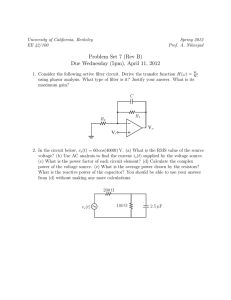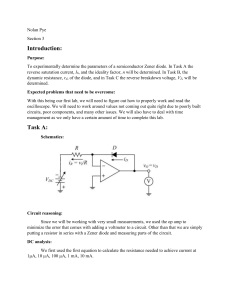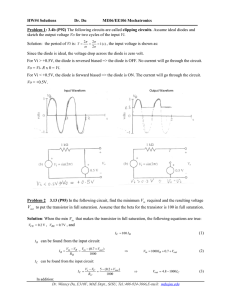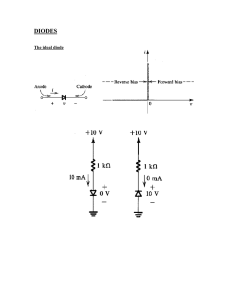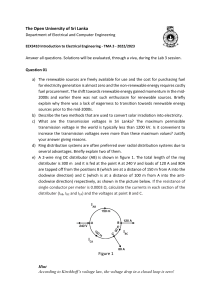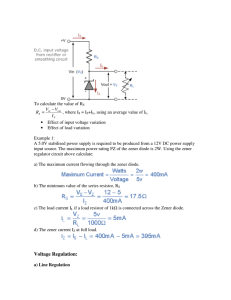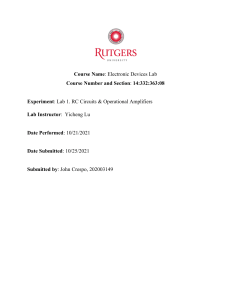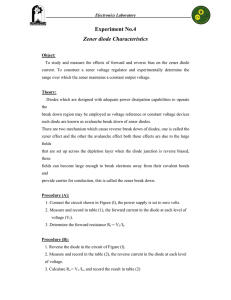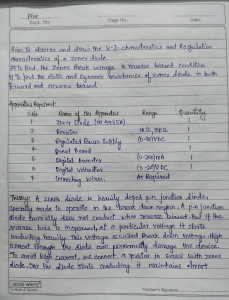Electronics Homework Answers: Diode & Transistor Circuits
advertisement
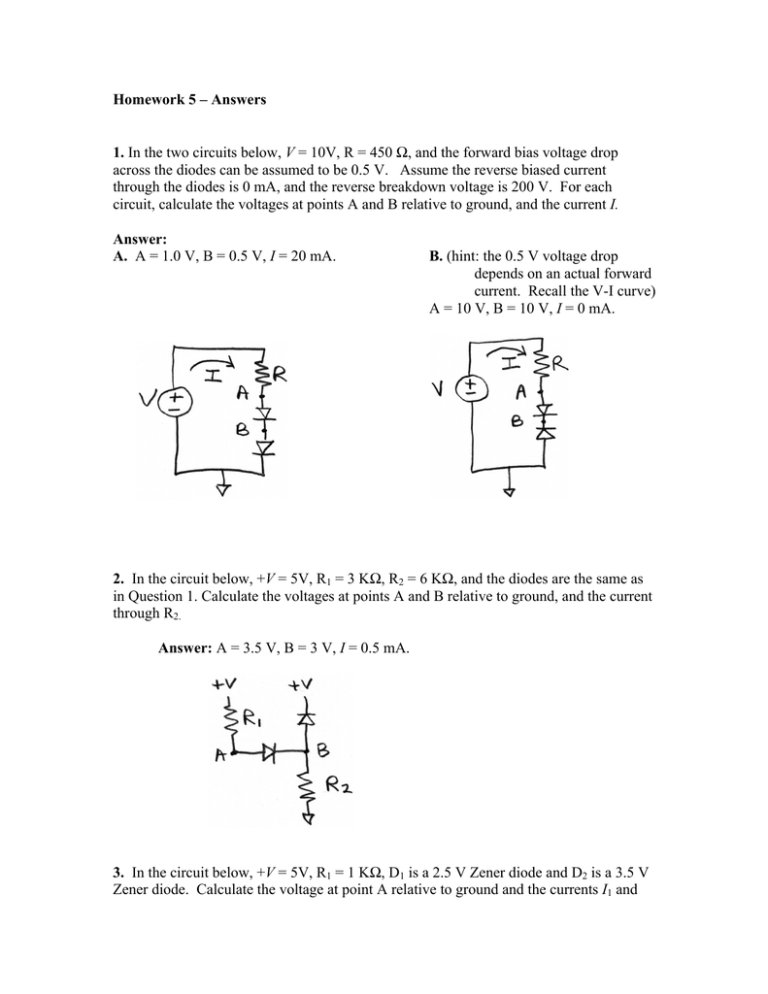
Homework 5 – Answers 1. In the two circuits below, V = 10V, R = 450 Ω, and the forward bias voltage drop across the diodes can be assumed to be 0.5 V. Assume the reverse biased current through the diodes is 0 mA, and the reverse breakdown voltage is 200 V. For each circuit, calculate the voltages at points A and B relative to ground, and the current I. Answer: A. A = 1.0 V, B = 0.5 V, I = 20 mA. B. (hint: the 0.5 V voltage drop depends on an actual forward current. Recall the V-I curve) A = 10 V, B = 10 V, I = 0 mA. 2. In the circuit below, +V = 5V, R1 = 3 KΩ, R2 = 6 KΩ, and the diodes are the same as in Question 1. Calculate the voltages at points A and B relative to ground, and the current through R2. Answer: A = 3.5 V, B = 3 V, I = 0.5 mA. 3. In the circuit below, +V = 5V, R1 = 1 KΩ, D1 is a 2.5 V Zener diode and D2 is a 3.5 V Zener diode. Calculate the voltage at point A relative to ground and the currents I1 and I2. (Hint, recall the voltage vs. current curve for the Zener diode. D1 and D2 must each obey its own curve). Answer: A = 2.5 V, I1 = 2.5 mA, I1 = 0 mA 4. In the following circuit, the forward biased voltage drop across the Base-Emitter junction of the transistor is 0.5 V. Assume β = 200, R1 = 2 KΩ, R2 = 6 KΩ, Vs = 20 V, and Vin = 1.5 V. A. Calculate the voltage at V1 and Vout . Answer: V1 = 1 V, Vout = 17 V B. What will the base current IB in the transistor be in part A? (two-place accuracy only) Answer: (1 V / 2 KΩ) / 200 = 2.5 µA. C. What change will be seen in Vout if Vin is raised from 1.5 V to 2.5 V? What is the gain of the circuit to changes in Vin (AC gain)? Answer: change of -3 V to 14 V, gain is -3.
